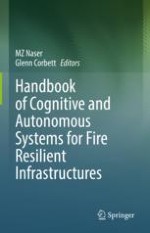2022 | OriginalPaper | Buchkapitel
13. Realistic Fire Resistance Evaluation in the Context of Autonomous Infrastructure
verfasst von : Liming Jiang, Xiqiang Wu, Yaqiang Jiang
Erschienen in: Handbook of Cognitive and Autonomous Systems for Fire Resilient Infrastructures
Aktivieren Sie unsere intelligente Suche, um passende Fachinhalte oder Patente zu finden.
Wählen Sie Textabschnitte aus um mit Künstlicher Intelligenz passenden Patente zu finden. powered by
Markieren Sie Textabschnitte, um KI-gestützt weitere passende Inhalte zu finden. powered by
